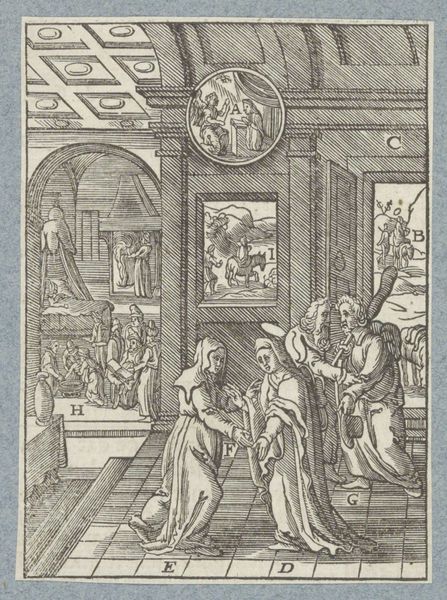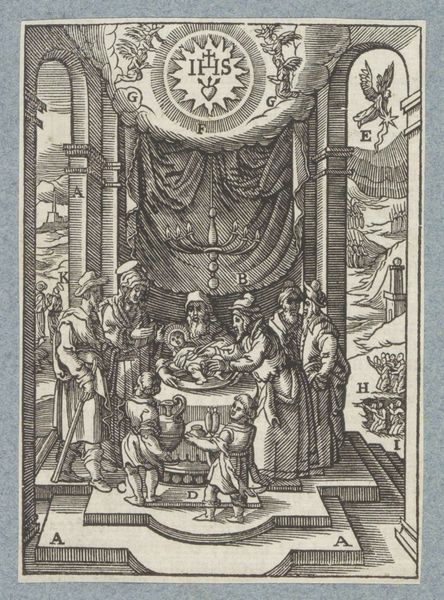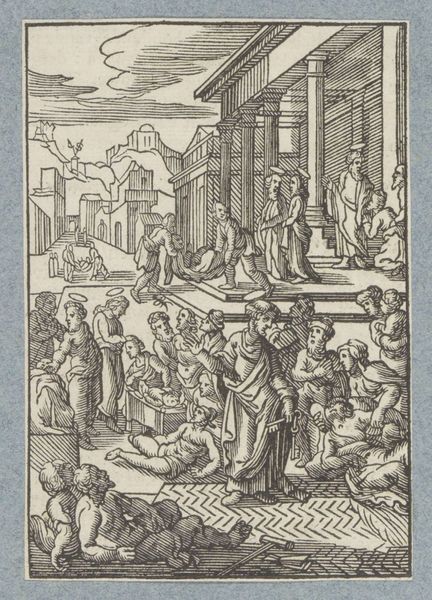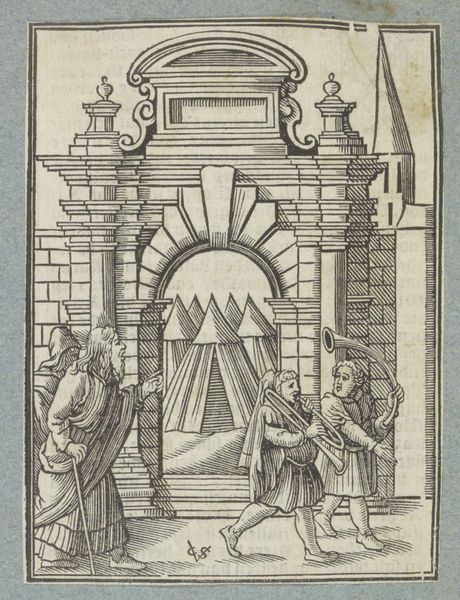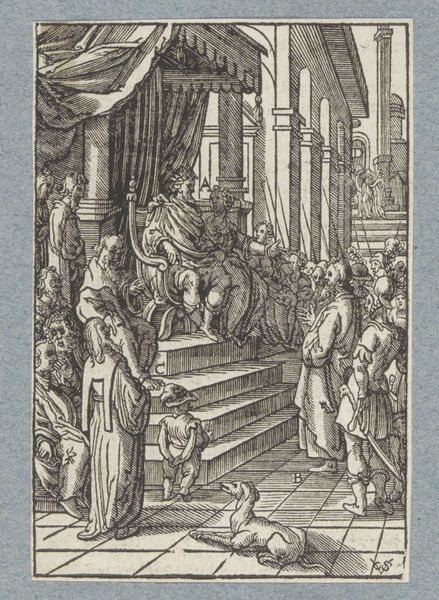
print, engraving
#
toned paper
#
quirky sketch
#
baroque
# print
#
sketch book
#
personal sketchbook
#
sketchwork
#
pen-ink sketch
#
line
#
pen work
#
sketchbook drawing
#
genre-painting
#
storyboard and sketchbook work
#
sketchbook art
#
engraving
Dimensions: height 113 mm, width 88 mm
Copyright: Rijks Museum: Open Domain
Curator: Immediately striking, isn't it? The composition, the almost theatrical setting. Editor: Indeed. There’s a captivating story unfolding here. I’m drawn to the light, even in this engraving – it gives everything such depth. Curator: I’d like to draw our listener's attention to "Vaatwerk voor het tabernakel," or "Vessels for the Tabernacle" crafted between 1645 and 1646 by Christoffel van Sichem II, now residing here at the Rijksmuseum. Editor: "Tabernacle" immediately carries sacred weight, doesn’t it? One imagines this work appearing as part of religious or civic publications. What would such objects mean for viewers? Curator: These aren’t mere depictions. For Sichem and his audience, vessels likely had resonance beyond their functional purpose. A culture would remember itself through imagery. Each of these items would've carried associated stories or morals, deeply intertwined with their shared religious heritage and contemporary domestic symbolism. Editor: The activity within is compelling: men hammering, smoothing. It appears the foregrounded vessels may represent future finished products. The arch lends a structured hierarchy to this setting. This organization reflects societal organization and work flow, perhaps echoing social stratifications. Curator: Precisely. The arch itself is significant. Throughout time arches often appear as points of transition from the profane to the sacred. Here, they signify the process and its value. Consider, too, the level of detail achievable with engraving at that time: the crosshatching suggesting volume, the distinct textures... Editor: And let us not forget, these "genre paintings," as they've been tagged, have cultural weight. Who decided the classification? For what purpose? The museum or archive invariably carries influence in meaning making. What contemporary values shape our view of Sichem’s artwork today? Curator: Those are powerful and pertinent questions. Perhaps the real strength of “Vessels for the Tabernacle” lies in prompting precisely this dialogue, bridging the sacred past and the interpretive present through crafted, functional things. Editor: Absolutely, seeing it through a symbolic lens reveals enduring themes of labor and societal aspiration, forever preserved on toned paper.
Comments
No comments
Be the first to comment and join the conversation on the ultimate creative platform.

